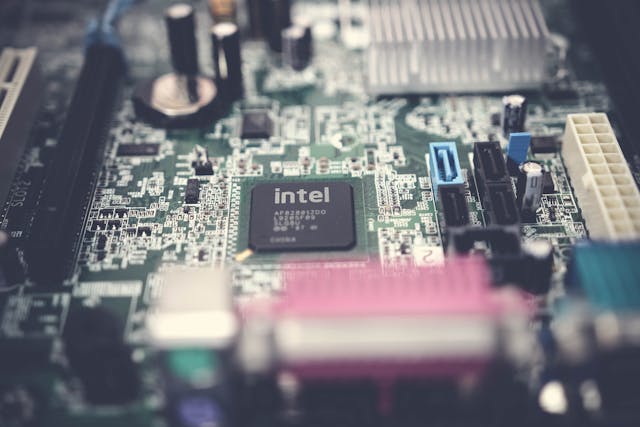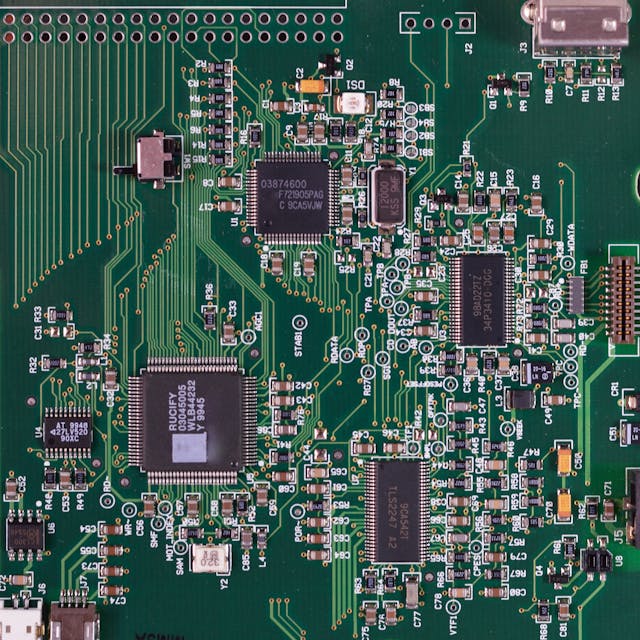What is Intel?

Intel Corporation is a multinational technology company headquartered in Santa Clara, California. Founded in 1968 by Gordon Moore and Robert Noyce, Intel is known for its innovative microprocessors and semiconductor technology.
Key achievements and products:
- Intel 4004: The world’s first commercially available microprocessor, released in 1971.
- Intel 8086: The first x86 processor, introduced in 1978 and the foundation for the vast majority of personal computers today.
- Pentium series: A line of high-performance processors that dominated the market in the 1990s.
- Core series: The current flagship line of processors, known for their powerful performance and energy efficiency.
Intel’s products are used in a wide range of applications, including:
- Personal computers
- Servers
- Data centers
- Embedded systems
- Internet of Things devices
Intel is committed to research and development, investing billions of dollars each year in new technologies. The company is a leader in semiconductor manufacturing and has a strong focus on sustainability and corporate social responsibility.
Read Also : Prevent Malicious Spying Apps on Both Android & iPhone
What is AMD?
AMD (Advanced Micro Devices) is a multinational semiconductor company headquartered in Santa Clara, California. Founded in 1969, AMD is a major competitor to Intel in the microprocessor market.
Key products and technologies:
- Ryzen series: AMD’s flagship line of processors, known for their strong performance-to-price ratio and competitive gaming capabilities.
- Radeon graphics: AMD’s line of discrete graphics cards, used in gaming PCs and workstations.
- EPYC series: AMD’s server processors, designed for high-performance computing and data center applications.
- 3D V-Cache: A unique technology that stacks additional L3 cache on top of the processor die, improving gaming performance.
- RDNA architecture: AMD’s graphics architecture, which has delivered significant performance improvements in recent generations.
The AMD processors are way more efficient than the current-gen Core series. The APUs of AMD are also a commendable option because they offer a great CPU performance and better iGPU performance compared to the Core i series. All the laptops that have Ryzen processors often have a lower clocking, and they are less aggressive than the laptops with Intel processors. They have longer battery life. Thus, whenever a user prefers a longer battery life and higher iGPU performance than the Core i series, the Ryzen powered laptops are a better option. Although, if you are building a new Desktop PC, you must avoid the older A-series APUs and FX series because they consume more power and produce more heat.
In the case of devices like desktops and mobiles, where a person uses them for day-to-day purposes and gaming, the Ryzen APU is the best option. For some heavy tasks such as 3D modeling, video editing, and more, the Threadripper or Ryzen 7 or 9 CPUs are preferable. In the case of Ryzen AMUs and CPUs on the AM4 platform, a user needs to check the motherboard chipset for support- otherwise, the PC may not proceed to boot. But one can resolve it with motherboards that have USB BIOS flashing for their newer processors.
AMD has made significant strides in recent years, gaining market share and challenging Intel’s dominance in the microprocessor market. The company’s focus on innovation and competitive pricing has helped it to establish a strong reputation among consumers and businesses alike.
Difference Between AMD and Intel
| Feature | Intel CPU | AMD CPU |
| Architecture | x86-64 (AMD64) | x86-64 (AMD64) |
| Core Count | Typically higher core counts, especially in recent generations | Historically lower core counts, but now competitive |
| Clock Speed | Generally higher clock speeds, especially for gaming | Historically lower clock speeds, but now competitive |
| Cache | Larger L3 cache sizes, especially in high-end models | Smaller L3 cache sizes, but often with 3D V-Cache technology for gaming |
| Socket Compatibility | Frequent changes in socket types | Relatively consistent socket types for longer periods |
| Integrated Graphics | Often included, especially in lower-tier models | Often included, but with varying performance |
| Power Consumption | Generally higher power consumption | Generally lower power consumption |
| Price | Typically more expensive | Typically less expensive |
| Gaming Performance | Strong single-core performance, often leading for high-frame-rate gaming | Competitive performance, especially with 3D V-Cache technology |
| Content Creation | Good for multitasking and heavy workloads | Excellent for multitasking and heavy workloads, especially with high core counts |

This Post Has 0 Comments